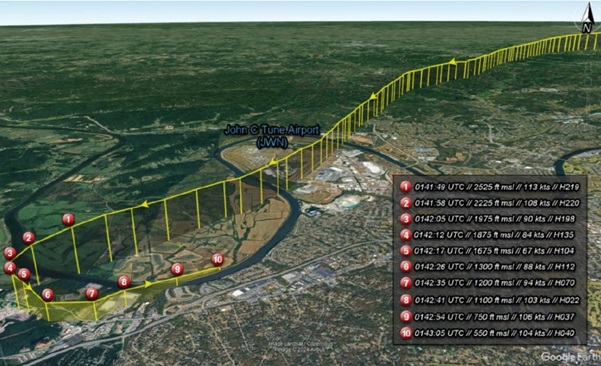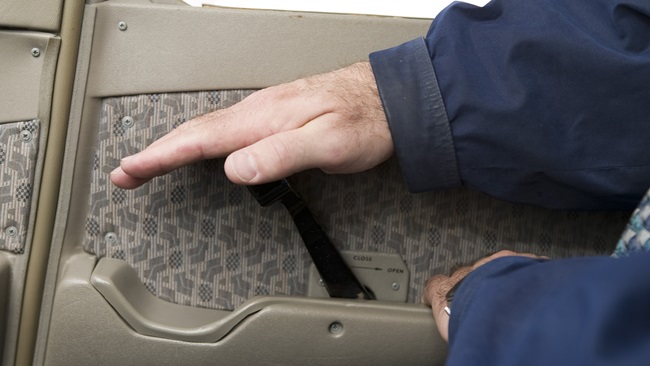Time in type
How much is too little for a CFI?
The federal aviation regulations give instructors broad latitude to teach in those categories and classes of aircraft authorized by their certificates. (Special FARs 73, covering Robinson R22 and R44 helicopters, and 108, covering Mitsubishi MU-2B turboprops, are among the rare exceptions.)
Five hours of pilot-in-command experience in the same make and model are required to instruct in a helicopter, multiengine airplane, or powered-lift aircraft—but that can be flown off on a single long cross-country. Professional ethics and enlightened self-interest may motivate instructors to take model-specific training in the maneuvers they intend to teach, but this isn’t mandated by the regulations.
The Oct. 4, 2016, crash of a Beech D-95A Travel Air during a training flight near Hitchcock, Texas, killed the 69-year-old flight instructor. His client, a 38-year-old private pilot, survived after being airlifted to a Galveston hospital in critical condition. It was his fifth multiengine lesson. His four previous flights in the Travel Air made up 3.4 of the 113.7 hours in his logbook. The CFI was a multiengine ATP with almost 9,900 hours of experience. Nearly half of that was in multiengine airplanes, much of it during a stint as an airline first officer between 1987 and 1991. Both men were members of the flying club that owned and operated the Travel Air.
The only eyewitness described seeing it “spiral … straight down.” The surviving pilot was initially unable to recall any of the accident sequence, but partial memories returned when his brother visited him in the hospital. The purpose of the flight had been to practice stalls. They had taken off about 6 p.m. and climbed to 4,000 feet. According to his brother, he “could not remember exactly what happened after [the CFI] took control over the plane to demonstrate the stall …” but had a vague recollection of him “‘cursing’ the plane as [he] was unable to recover.” He did not remember placing the 911 call that led rescuers to the crash site.
GPS-derived altitude data recovered from a Garmin 396 portable unit showed the airplane climbing to a maximum altitude of 4,800 feet … then returning to sea level in just 45 seconds, a descent rate of 6,400 feet per minute. Data logged by the Travel Air’s engine monitors showed the left engine’s exhaust gas temperatures dropping steadily through that same 45-second period while the right engine’s EGTs remained almost constant. The NTSB’s description of the wreckage notes that “the bottoms of both propeller spinners were flattened.” This evidence led the board to conclude that the instructor allowed the stall demonstration to progress into an inadvertent spin from which he was unable to recover … most likely during a simulated engine failure.
In May 1981, the NTSB published a series of safety recommendations (A-81-49 through A-81-53) regarding single-engine work in the Travel Air and its successor, the Beech Baron. They make sobering reading. A conclusion that “training for a potential emergency in Beech Baron/Travel Air airplanes, such as an engine-out condition, may be more hazardous than the emergency itself” was motivated by the following analysis:
“For some conditions of airplane gross weight and altitude, the single-engine stall speeds of the aircraft are greater than the single-engine minimum control speeds (Vmc). Consequently, when pilots, including instructor pilots, attempt to demonstrate Vmc or loss of directional control, they may unexpectedly encounter a single-engine stall. At high asymmetric power, the stall in these airplanes is abrupt and is accompanied by rapid rolling to an inverted or near inverted position, followed by entry into a flat spin.” A 1974 Army study of the military version of the Model 55B Baron characterizes single-engine stalls as “violent and potentially catastrophic,” noting that the roll produced by asymmetric thrust meant that even half a second’s delay in applying appropriate control inputs would require recovery “from a split-S or complete wing-over maneuver. With slightly longer delays (approaching 1 second) the wing-over progresses immediately into an upright spin.”
This would be useful information for any CFI contemplating dual instruction in these airplanes, but it seems unlikely the accident instructor was aware of it. He’d received his CFI-airplane in 1981 and his multiengine instructor in 1984, but had only given 16 hours of multiengine instruction over the past 11 years. His first recorded flight in the Travel Air was a flight review completed eight weeks before the accident, and 6.7 of his total 11.6 hours in type were logged as dual given. His logbooks make no reference to practicing stalls in the D-95A, and his only recorded spin training was two flights—one in a Cessna 152, the other in a Piper Tomahawk—for a combined 1.6 hours back in 1981. He may have relied on the assumption that a certified airplane should have reasonable stall behavior. While plausible, it’s no substitute for specific expertise.



